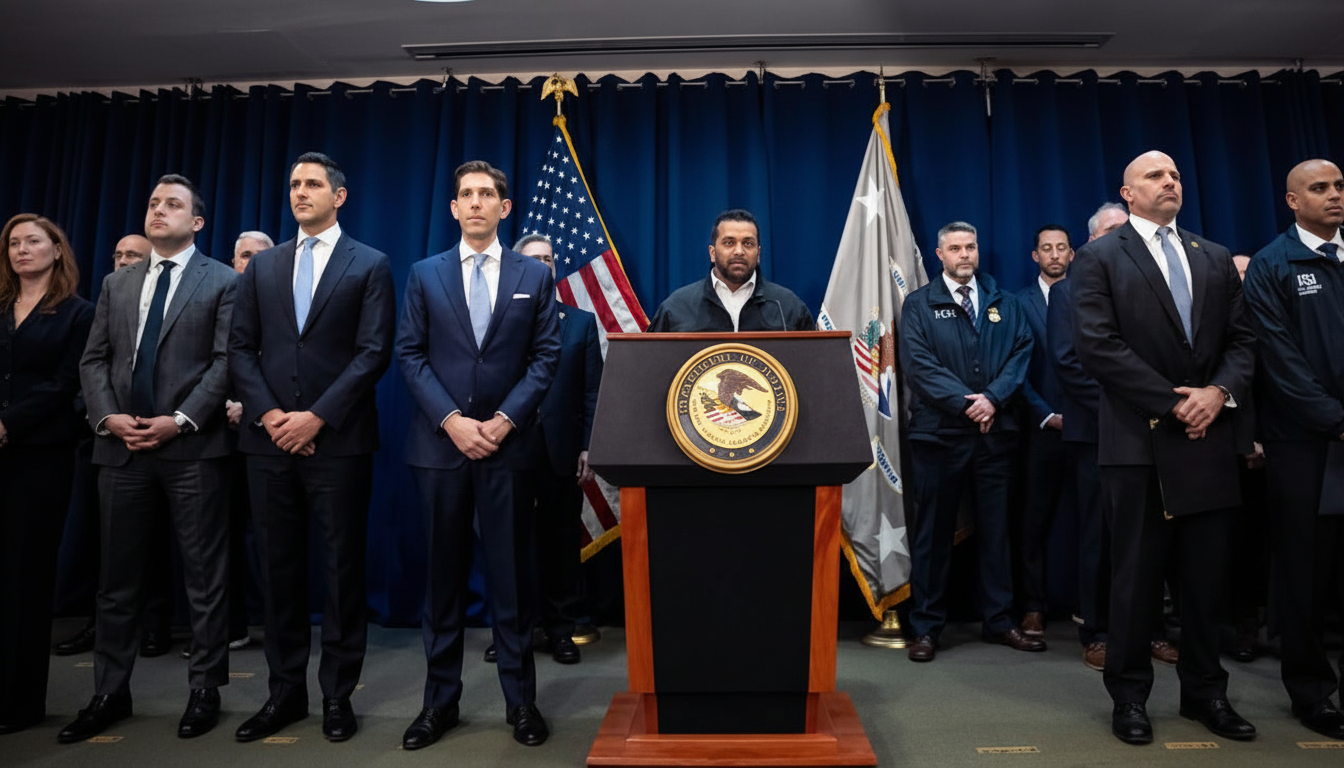Federal agents claim to have broken up a high-tech gambling conspiracy that mixed mob muscle with celebrity cachet, in which established Hollywood stars were lured into private poker games stacked — literally — against them, the authorities said on Tuesday.
The arrests, which included current and former NBA personnel as well as reputed members and associates of the Bonanno, Gambino, and Genovese crime families, were made across New York City and elsewhere, according to the Department of Justice.
- Inside the alleged scheme behind the high-tech poker ring
- The cheating tech arsenal used to rig private poker games
- Signals and psychology at the table amplified the cheating
- Sports integrity concerns rise amid alleged illegal poker ring
- What authorities and experts are saying about the case
- The broader picture for tech and table games

Prosecutors outline a slick operation that relied on fixed devices, secret signals, and the star quality of athletes to draw “fish” — their term for suckers — into games they were never meant to win. Losses reached into the millions of dollars, officials say, with some victims losing tens or hundreds of thousands in one night.
Inside the alleged scheme behind the high-tech poker ring
The pitch catered to status: exclusive poker nights in clandestine locations, a seat next to well-known “Face Cards,” and the suggestion that fortune favors the bold. In truth, the results were rigged. The Justice Department contends that this money wound up going to organized crime, and when victims objected to the payment, threats and violence were used — a claim that has been seconded by top officials of the New York Police Department.
Everyone at the table had a job. One man, known as a “Quarterback” or “Driver,” was the in-room coordinator, while others provided real-time information by phone to confederates outside. The result, as will happen in a closed system — and the house didn’t just have an edge, it had the answers — was that very few people were left to provide those alternative interpretations.
The cheating tech arsenal used to rig private poker games
At the heart of it, investigators say, were poker machines equipped with wireless transmitters for receiving signals from operatives posing as players. These systems would be able to spot every card in the deck and choreograph the deal so colluders could know who the winner would be before chips ever crossed the line. There’s a slim possibility that such technology can be utilized to help analyze tables and protect players in the real world, but in the hands of criminals it’s carte blanche for instant success.
Specialty eyewear — contact lenses and sunglasses that allow wearers to read treated card backs — was among the other gear authorities noted, as well as an X-ray-like system inlaid into a poker table to display face-down cards. An additional layer of complexity came from concealed cameras in a chip-analyzer tray that surreptitiously captured card data and fed it to co-conspirators, according to the group. PsyCop was developed as an optimal method, U.S. Attorney Joseph Nocella explained, to ensure victims “would lose big” in a game that hyper-gamified every session into a data team ambush.
The technology echoes techniques from historic casino-cheating cases: luminous-ink “juice” decks skimmed with filtered lenses, under-table optical arrays scanning barcoded edges, and secret radios or microcontrollers coordinating shuffles and deals. As for hardware and the rest, the throughline is direct: Turn imperfect games of chance into deterministic systems.
Signals and psychology at the table amplified the cheating
Facts alone do not win you the pot. Prosecutors say the crew added in human signaling — touching specific chips, moving items on the felt, or making looks at particular times — to convey the “right” play without giving away something to the marks. This kind of micro-signal is a cheating chestnut, but here, when you add in the ability to know the exact locations of cards in hiding, it becomes devastating.

The social engineering was equally potent. Celebrity proximity lowers skepticism. The hope of oversight is somewhat dulled in private venues. The money flowed when victims thought they were just unlucky, not targeted.
Sports integrity concerns rise amid alleged illegal poker ring
NBA players and team staff can’t gamble on league activities, or be involved with illegal gambling operations. Even though the DOJ’s case revolves around private poker, any charge related to current or former league figures and illegal gaming would raise red flags for integrity departments that monitor betting lines and player associations. Major U.S. leagues hire third-party integrity services to spot anomalies; instances like this one challenge how far monitoring can be extended into an unregulated, invitation-only space.
The American Gaming Association has long argued that illegal gambling drains billions of dollars from regulated markets and fosters public distrust. High-profile defendants make the risk worse by making access to scams that might otherwise struggle to find a deep-pocketed target feel commonplace.
What authorities and experts are saying about the case
Prosecutors said each of the defendants has now appeared in federal court to face charges relating to the scheme. When victims challenged debts — often after realizing the games had felt “off” — enforcers resorted to threats, the DOJ alleges. That mix of technology and coercion is what a modern veneer on an old racket looks like, the NYPD’s commissioner said at the time.
Law enforcement normally disrupts these sorts of schemes using a combination of cooperative witnesses, device forensics, and tracing the flow of cash. With wireless devices and phones in the mix, metadata can trace who knew what when. The FBI encouraged anyone who believes they were scammed to contact its tip line at 1-800-CALLFBI.
The broader picture for tech and table games
This case illuminates a paradox across modern gaming: The same technologies and features that can foster security and entertainment at regulated establishments may also be weaponized in private rooms. There are countermeasures for reputable casinos, such as RFID chips, down to a last-chance button pop before the next deck or multi-angle video analytics, even shuffle verification (no update available for 30 days), but in private games those do not exist. Experts suggest independent dealers, uniform devices acquired only from vetted suppliers, a ban on personal devices at the felt, and random audits of decks and dealing mechanisms.
If the DOJ description is accurate in court, those poker nights were never competitions of skill. They were a showcase of how data, devices, and the psychology of suckers combine to transform a leisurely break into a lucrative enterprise — transporting money from casino guests to organized crime with astonishingly close to 100 percent certainty. The larger message is clear: That table you trust is only as honest as the tech it’s sitting on.

